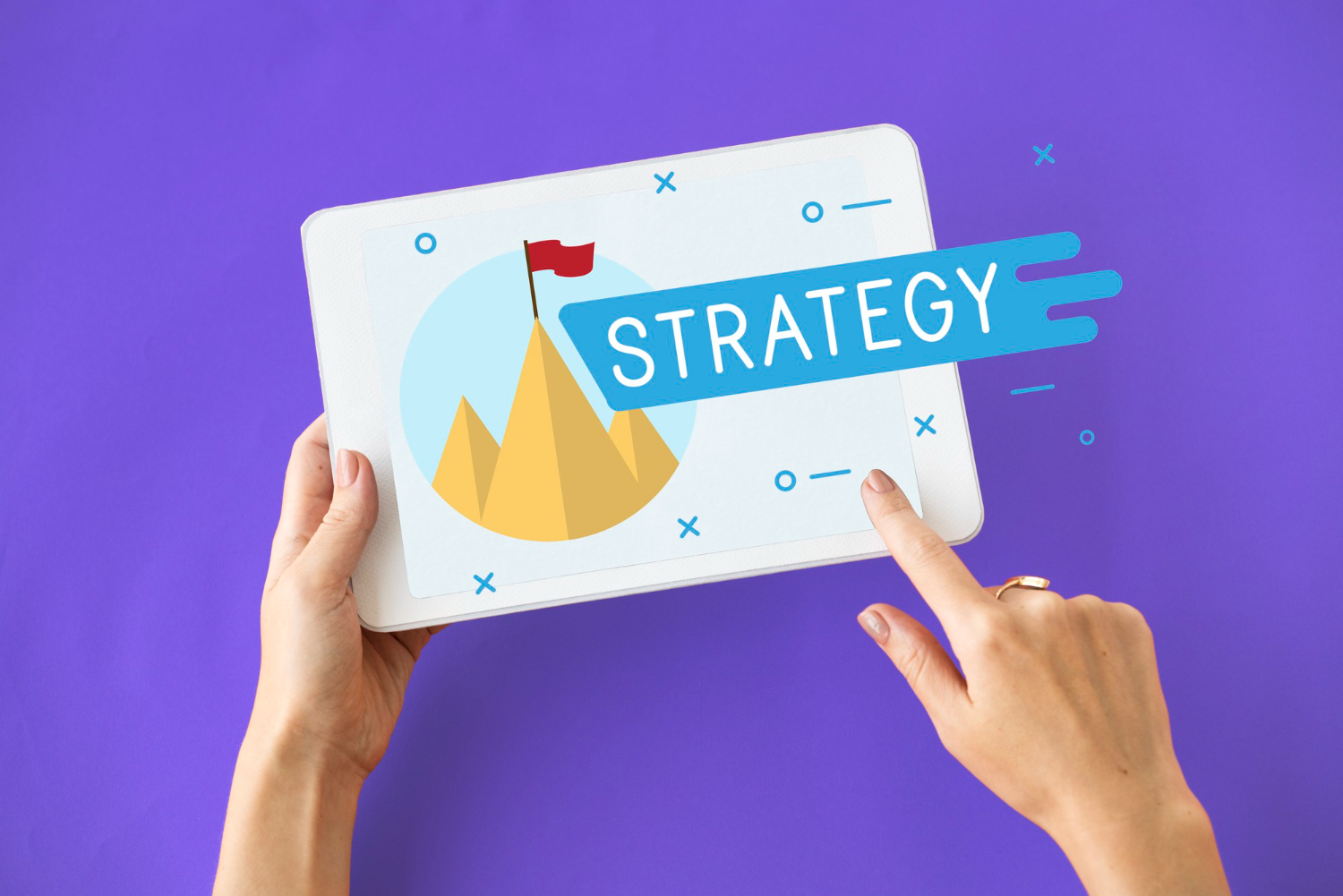
Mastering Google Gemini: Tips and Tricks for Optimising Your Advertising Campaigns
Last update: 8 August 2024 at 09:17 am
Google’s AI-powered chatbot is Google Gemini 1.0 ultra. It was previously known as Bard. The massive multitask language understanding bot can answer queries and offer information. It’s a subtle means to create content and interact with other Google services and apps with ease.
Unlike ChatGPT and Copilot, Gemini 1.0 ultra only defines itself by processing spoken inquiries. The chatbot provides audio replies and even composes multiple versions of text on request. Gemini 1.0 Ultra has a lot of promise despite its general underappreciation, especially for marketers looking for creative methods to improve their ads.
Advertising professionals need to understand Gemini as a strategic generative AI need in the very competitive digital world. Gemini’s distinctive new features and problem-solving abilities will give marketers an array of opportunities to interact more personally and dynamically with their target audience. Advertisers may explore new possibilities for creativity and worth in their advertising campaigns by utilising Google’s AI.
This post will examine Google Gemini’s features. It will talk about how marketers may use them to maximise the effectiveness of their advertising campaigns. We’ll begin by delving into the foundations of Gemini. Let us comprehend Google AI Studio with salient features and study its possible uses in advertising.
Key Takeaways
- Understanding Google Gemini: Google Gemini 1.0 Ultra, an AI-powered chatbot, provides dynamic voice and text responses. It excels in personalised ad experiences and advanced audience targeting.
- Setting Up Your Campaign: Use Google Ads to create campaigns with clear goals, target audiences, and suitable ad formats. Align objectives with your marketing strategy and adjust your budget for optimal ROI.
- Audience Targeting Strategies: Reach specific segments with demographic targeting, connect with relevant audiences using interest targeting, and re-engage past visitors through remarketing.
- Ad Creative Optimisation: Craft compelling ad copy, design visually appealing creatives, and test variations to find top performers. Use performance data to make impactful adjustments.
Understanding Google Gemini
a. Explanation of Google Gemini’s features and capabilities
Gemini is an expert in machine learning and natural language processing. It can answer questions in text and voice with human-like accuracy. Above and beyond simple replies, Gemini Ultra is skilled at handling many highly complex tasks. It can respond to queries to complete assignments on Google Cloud and provide a wide range of outputs, including text and pictures.
b. Key differences between Google Gemini and other advertising platforms
Gemini is unique among traditional advertising platforms because of its AI-driven methodology. The approach makes user interactions more dynamic and tailored. It stands out because it can interpret spoken questions and produce audio answers on a context window. The chatbot provides a different kind of interaction that tries to outperform human experts.
c. Audience targeting options available on Google Gemini
Google Gemini Ultra uses artificial intelligence (AI) to provide highly customised ad experiences and provides a variety of advanced audience targeting choices. Advertisers may reach particular audiences depending on region and age by using demographic targeting.
Moreover, behavioural targeting makes it possible for advertisements to be shown in response to consumers’ previous online behaviours and interactions. This targeting guarantees relevancy and increases engagement. Advertisers may more effectively target specific audience groups using Gemini’s sophisticated targeting features without potential risks. This technique easily improves campaign success and return on investment.
Setting Up Your Google Gemini Campaign

a. Step-by-step guide to creating a campaign
It’s simple to set up a Gemini campaign. Access the Google Ads interface first, then choose “Create Campaign.” Select the objective of your campaign: raise brand recognition or improve conversions. Next, decide who your target market is and establish your bidding strategy and budget. Based on these things, you can produce eye-catching ad creatives.
b. Best practices for selecting ad formats and placements
Take your target audience’s tastes and habits into account when choosing ad types and locations for your Gemini campaign. Select ad formats such as responsive image search advertisements. This adapts to different spots for image advertising on the takeoff. It gives preference to placements that correlate with the interests and surfing patterns of your target audience. Use Google’s targeting tools as well to make sure that the most appropriate users see your advertising.
c. Tips for defining campaign objectives and setting budget parameters
Make sure you are making Gemini campaign goals well-defined. They are in line with your overall marketing objectives before commencing. Make sure your goals are clear and doable. This is regardless of whether your goal is to boost revenue or raise brand awareness. To properly manage resources and optimise your return on investment, take into account variables such as the size of your target audience. You must also consider the level of competition and the length of time you wish to run your campaign.
Audience Targeting Strategies

a. Utilising demographic targeting to reach specific audience segments
Advertisers may customise their video advertising using demographic targeting to target certain audience categories, such as age and region. Advertisers may build more engaging and targeted video ad experiences that appeal to their target demographics. This can easily be done by knowing the demographic breakdown of their target audience.
b. Leveraging interest targeting to connect with relevant audiences
Advertisers may connect with consumers based on their interests and online activity by using interest targeting. Advertisers may connect with audiences that are more likely to interact with their advertising. They convert by discovering and targeting certain interests connected to your products or services. This tactic aids in maximising campaign efficacy and ad relevancy.
c. Harnessing remarketing to re-engage past visitors and customers
Advertisers may re-engage visitors who have previously connected with their website or mobile app by using remarketing. They may nurture leads—people who have expressed interest in their goods or services but haven’t completed a desired action, like completing a purchase. This can be done by focusing on these users and encouraging them to come back and convert. Remarketing keeps your business at the forefront of potential clients’ minds. The tactic boosts conversion rates and brand memory.
Ad Creative Optimisation
a. Crafting compelling ad copy that grabs attention and drives action
Ad copy that is compelling should be convincing and customised to the requirements and tastes of your target demographic. To increase clicks and conversions, use attention-grabbing images and news headlines. Try to make use of obvious calls to action and compelling language. Try out a variety of communication strategies to see which ones best connect with your audience and motivate the required actions.
b. Designing visually appealing creatives that align with your brand identity
Eye-catching web creatives should draw in the audience and showcase your brand’s personality and messaging. Make use of compelling graphics, videos and images that communicate the personality and values of your company. It should imply consistent branding components and high-quality photos, images or videos. To get the most effect and reach, make sure your creatives are suited for a variety of platforms and devices.
c. Testing different ad variations to identify top performers
Optimising performance and increasing return on investment requires testing many ad variations. To find the best combinations, try different components, including headlines or graphics. You can even make use of ad copy and calls to action. Make constant revisions and changes to your ad creatives using A/B testing and performance data. This helps make sure your audience is receiving the most impactful messaging possible by a capable model.
Bid Strategy and Budget Management

a. Understanding bidding options available on Google Gemini
Bidding options on Google Gemini Advanced include target CPA bidding. It also has a most capable AI model that includes automatic bidding and manual bidding. Advertisers can choose their own bids while using manual bidding. In contrast, AI models with automated bidding optimise bids based on performance data using machine learning. Target CPA bidding employs AI tools with the most efficient model to modify bids in order to achieve a particular cost per acquisition.
b. Tips for optimising bids to maximise ROI and ad performance
Regularly view AI models and modify your bids in light of campaign goals and performance of the first model. Also, information and market developments should be considered to optimise return on investment and ad performance. Try a variety of bidding techniques, such as modifying bids based on the on-device tasks or the audience group. This will help determine which capable AI model works best. To maximise bidding efficiency and provide priority to high-value traffic, use bid modifiers and bid adjustments.
c. Budget management techniques to ensure campaign efficiency
Successful campaign execution depends on efficient budget management. Determine a reasonable budget based on the best model and anticipated returns through generative AI models. It should also be based on the size of the target audience and the campaign’s aims. Target top-performing campaigns and channels by keeping a close eye on campaign spending and adjusting budget allocations as necessary. To guarantee maximum budget use and enhance campaign efficiency, make use of automatic budget changes and budget pacing tools.
Tracking and Analytics
a. Setting up conversion tracking to measure campaign success
Tracking conversions is crucial for determining the effectiveness of campaigns. Install conversion tracking to keep an eye on important activities like downloads and transactions. Conversion monitoring allows you to improve targeting and distribute cash wisely. You can also assess campaign success with accuracy to maximise return on investment.
b. Analysing key metrics such as CTR, conversion rate, and ROAS
Gain insightful knowledge about campaign effectiveness by examining AI of important data, including click-through rate (CTR). Also, gain data on conversion rate and return on ad spend (ROAS). Regularly assess these indicators to find patterns and opportunities for developing the payment of a new generation. Optimise campaign success and return on investment by modifying targeting and bidding methods in response to performance data.
c. Using data insights to refine and improve campaign performance
Insights from data are crucial for enhancing and optimising the effectiveness of campaigns. To find trends and optimisation possibilities responsible AI, analyse performance data. You can also gain knowledge of audience preferences through the data. Test theories and improve marketing components by experimenting and using A/B testing. To improve outcomes and meet marketing goals, iterate and adjust campaigns continuously using data insights.
Advanced Optimisation Techniques
a. Implementing advanced targeting tactics, such as custom audiences and lookalike audiences
Advertisers may connect with extremely pertinent and qualified prospects by using advanced targeting strategies like customised and lookalike audiences. To target people based on certain characteristics, such as past interactions or past purchases, employ custom audiences. Lookalike audiences increase marketing performance and return on investment by focusing on users who share traits with current consumers. This broadens the audience.
b. Experimenting with ad scheduling and device targeting for optimal reach
There are ways to maximise reach and engagement with ad scheduling and device targeting. Try displaying advertisements at peak hours when your target market is most engaged by experimenting with ad scheduling. To select platforms or devices that generate the best conversion rates, you should also modify your device targeting. Advertisers may increase the effectiveness and performance of their campaigns by fine-tuning the time of ad delivery and device choices.
c. Integrating Google Gemini with other Google advertising products for cross-channel optimisation
The integration of Google Gemini models with other Google advertising tools facilitates improved campaign success and cross-channel optimisation. Utilise platform integrations such as Google Ads and Google Analytics to obtain a full understanding of audience behaviour and campaign effectiveness. To optimise across channels for optimum effect and return on investment, use cross-channel data to fine-tune targeting and bidding strategies.
Case Studies and Success Stories
a. Real-world examples of advertisers achieving success with Google Gemini
The partnership between WPP and Google demonstrates the practical use of Gemini AI. Coca-Cola, L’Oréal, and Nestlé are just a few of the world’s largest companies WPP hopes to improve creativity and usefulness for. It is done by human experts using Gemini Nano for jobs like ad narration and product image creation. This collaboration demonstrates Gemini’s ability to revolutionise advertising tactics and provide measurable outcomes.
b. Insights into strategies and tactics used in successful campaigns
Advertisers can now produce brand-specific video and natural image content. They can anticipate generating video and images’ impact with previously unobtainable precision by combining Google’s latest AI technologies with WPP’s marketing data and knowledge. This strategy emphasises how crucial it is to use AI-driven solutions to improve the efficiency of marketing.
c. Lessons learned and actionable takeaways for other advertisers
The partnership highlights the value of creativity and teamwork in promoting marketing success. It urges sponsors to explore AI-powered options to improve their ads and produce significant outcomes.
|
Discover the most relevant agencies for your project based on your own specific requirements.
Find an agency!Conclusion
To effectively use Google Gemini, advertisers should use the sophisticated targeting, creative collaboration techniques and innovative optimisation methodologies described in this article. Ad creative optimisation and sophisticated targeting strategies are all necessary for conquering Google Gemini era.
The partnership between Google and WPP illustrates how Gemini can revolutionise the advertising industry. Advertisers are urged to apply the offered advice, employing Sortlist’s knowledge to traverse the complexity of Gemini. You must continuously adapt and enhance your campaigns, ensuring you stay at the forefront of the constant shifts in digital advertising.
For advertising agencies in London, leveraging Google Gemini could be a game changer, providing unique AI-driven insights and enhancing their ability to create more targeted and effective advertising campaigns.
FAQs
Google Gemini is an AI-powered tool designed to enhance search capabilities and provide more personalised and accurate results. It integrates advanced machine learning and natural language processing to better understand user queries, deliver relevant information, and improve overall search experience. Gemini may also incorporate features like predictive analytics and real-time data processing to offer tailored insights and recommendations.
Yes. There are two versions of Gemini available now: a free mobile app with text-based features and a paid tier with more features.
Yes, Google Gemini AI has a free version. However, there are some things to keep in mind:
Free Tier: Available, with basic features. Not available in all regions.
Gemini Advanced: Paid subscription with more features.
There are two ways to access Gemini AI, depending on which version you want:
Free mobile app: If your device is eligible, you can download the Gemini app from the Google Play Store.
Web app (paid): Visit gemini.google.com and sign in with your Google account. This requires a paid subscription to Gemini Advanced (not available in all regions).





